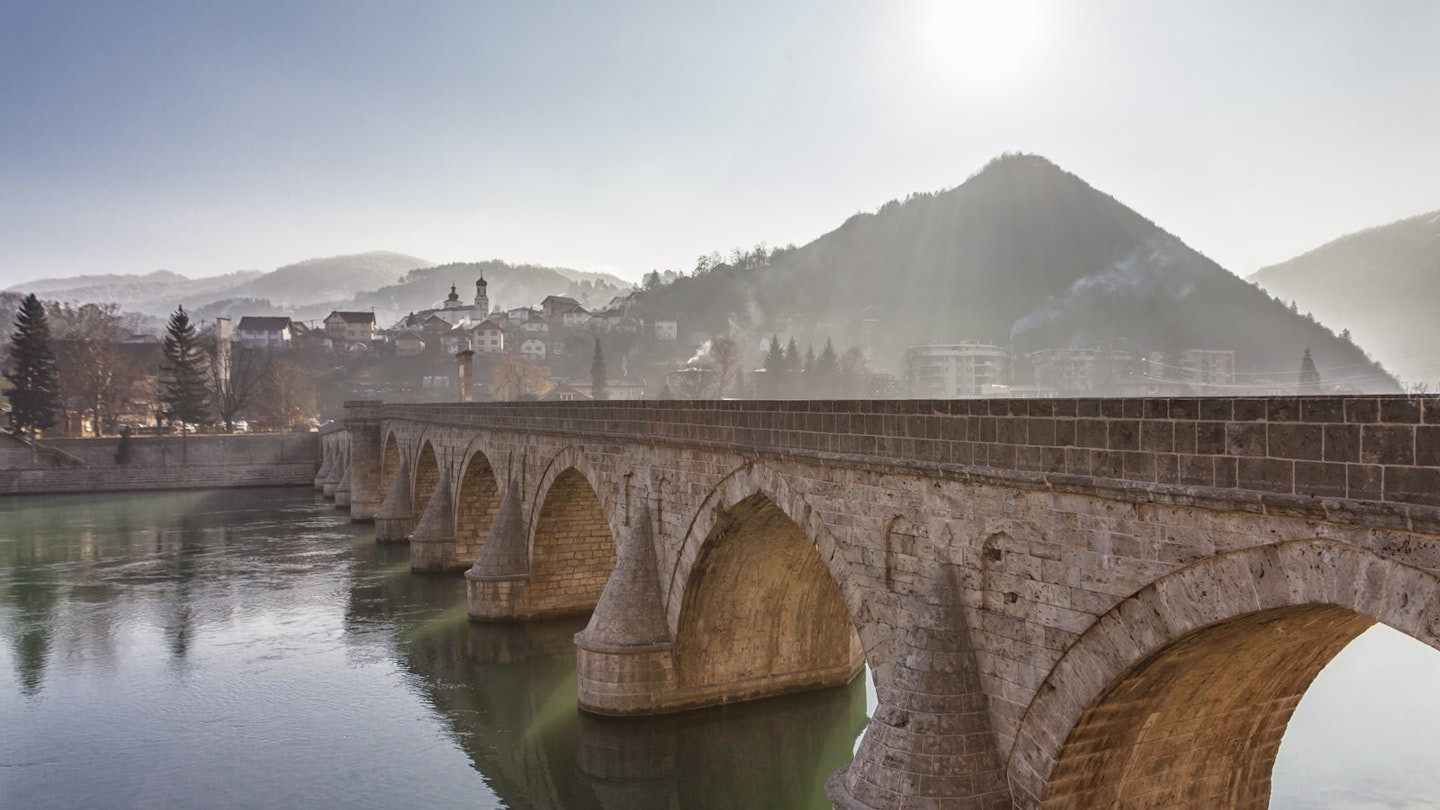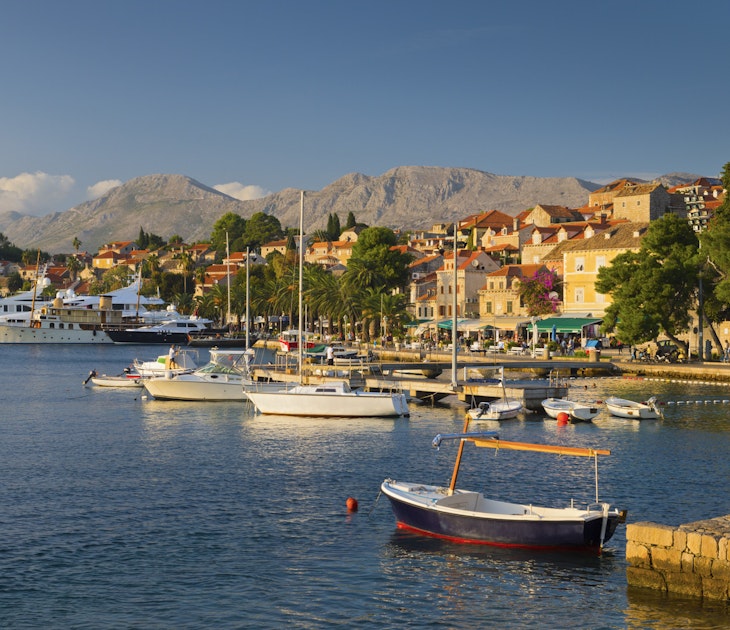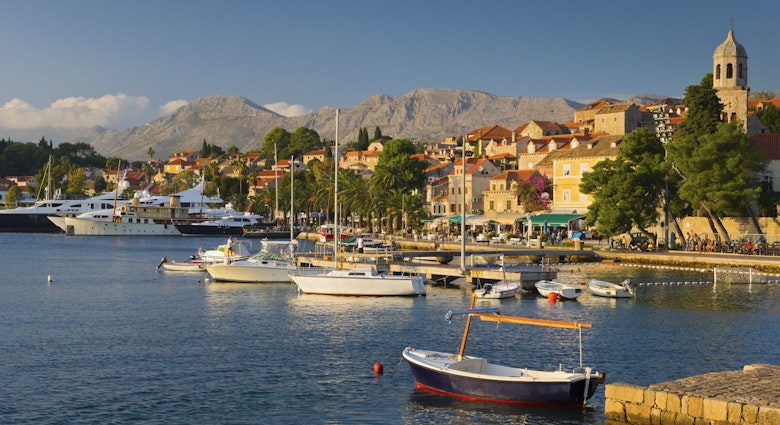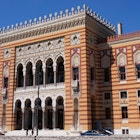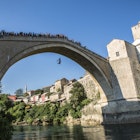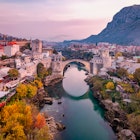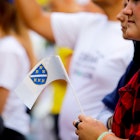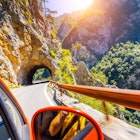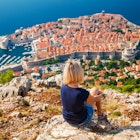With more than five centuries of Ottoman history and a Muslim-majority population, modern Bosnia and Hercegovina brims with Islamic heritage. This land of Grand Viziers, magnificent imperial mosques and delicious Muslim cuisine is the perfect place to get a deeper understanding of the history and influence of Islamic culture in Europe.
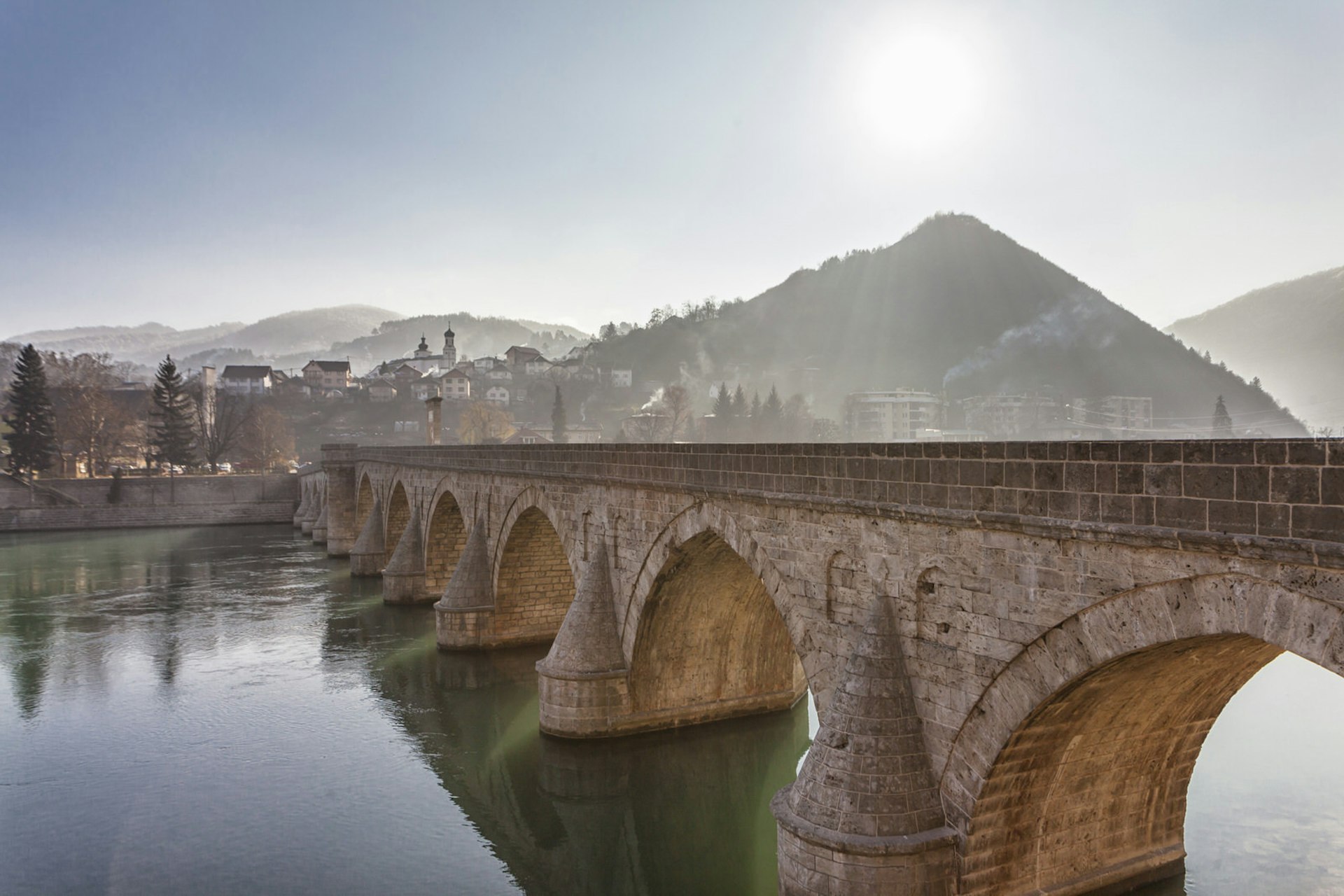
Stare in awe at a 'Sinan'
There are Muslim architects and then there's Mimar Sinan. Born around 1490, Sinan became the chief architect for the Ottoman Empire. The magnificent ten-arched stone bridge over the River Drina at Višegrad is the only confirmed 'Sinan' in Bosnia and Hercegovina (BiH), and the master architect's fingerprints are all over this vision of symmetrical engineering. Built in 1577 and commissioned by locally born Ottoman Grand Vizier Sokollu Mehmet Pasha, the bridge has already survived five centuries and looks solid enough to easily last another five.
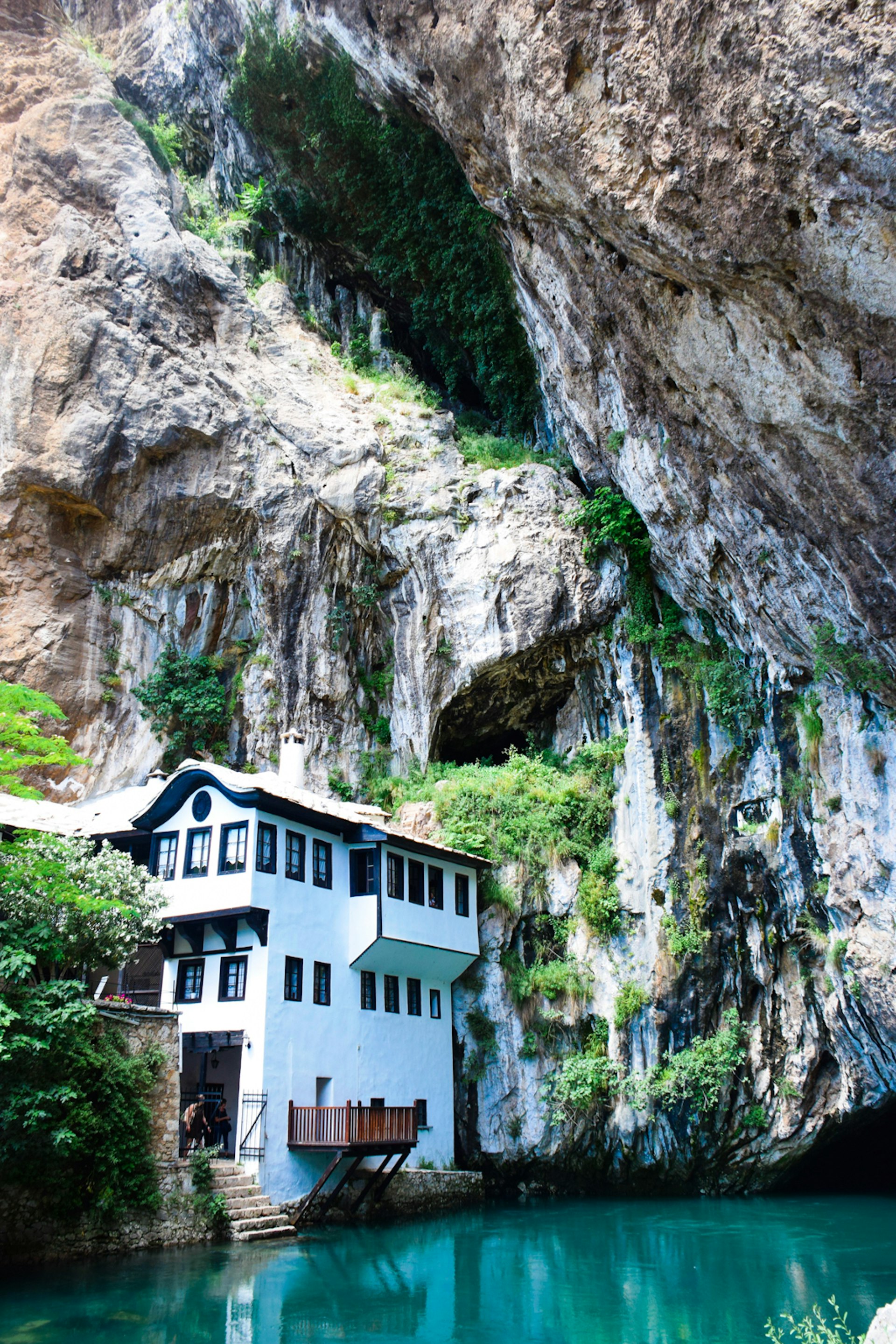
Lose yourself in a mystical dhikr
The Sufi lodge at Blagaj sits at the mouth of the River Buna with a huge cliff rising up behind it – a truly awe-inspiring sight. Maybe that’s why the mystical Muslims chose this spot to build their tekija, or monastery, some five hundred years ago. Today, the musafirhana (guest house) and türbe (mausoleum) are part tourist site and part places of worship, with selected dhikr (remembrance) sessions even open to the public. This means anyone can respectfully take part in this unique spiritual form of Muslim worship – rhythmic chanting and movement – practised here since Islam first came to BiH.
Honour the fallen at Srebrenica
There's no getting away from it. The bullet holes still on the walls of Sarajevo buildings, the memorials scattered across the country – even the days around the festival of Bayram (Eid) are dedicated to the memory of those who lost their lives in the tragic Bosnian War between 1992 and 1995. But it’s the story of the genocide at Srebrenica that induces the greatest feeling of horror. Walk through the Srebrenica Memorial Hall where thousands of Muslims sought shelter before the massacres. Then step into the serenity of the vast memorial garden, where every year headstones are added as remains from mass graves continue to be painstakingly identified – 23 years on from the killings. Stand firm as you read the names of the growing list of dead, for this too is Bosnia's Muslim heritage.
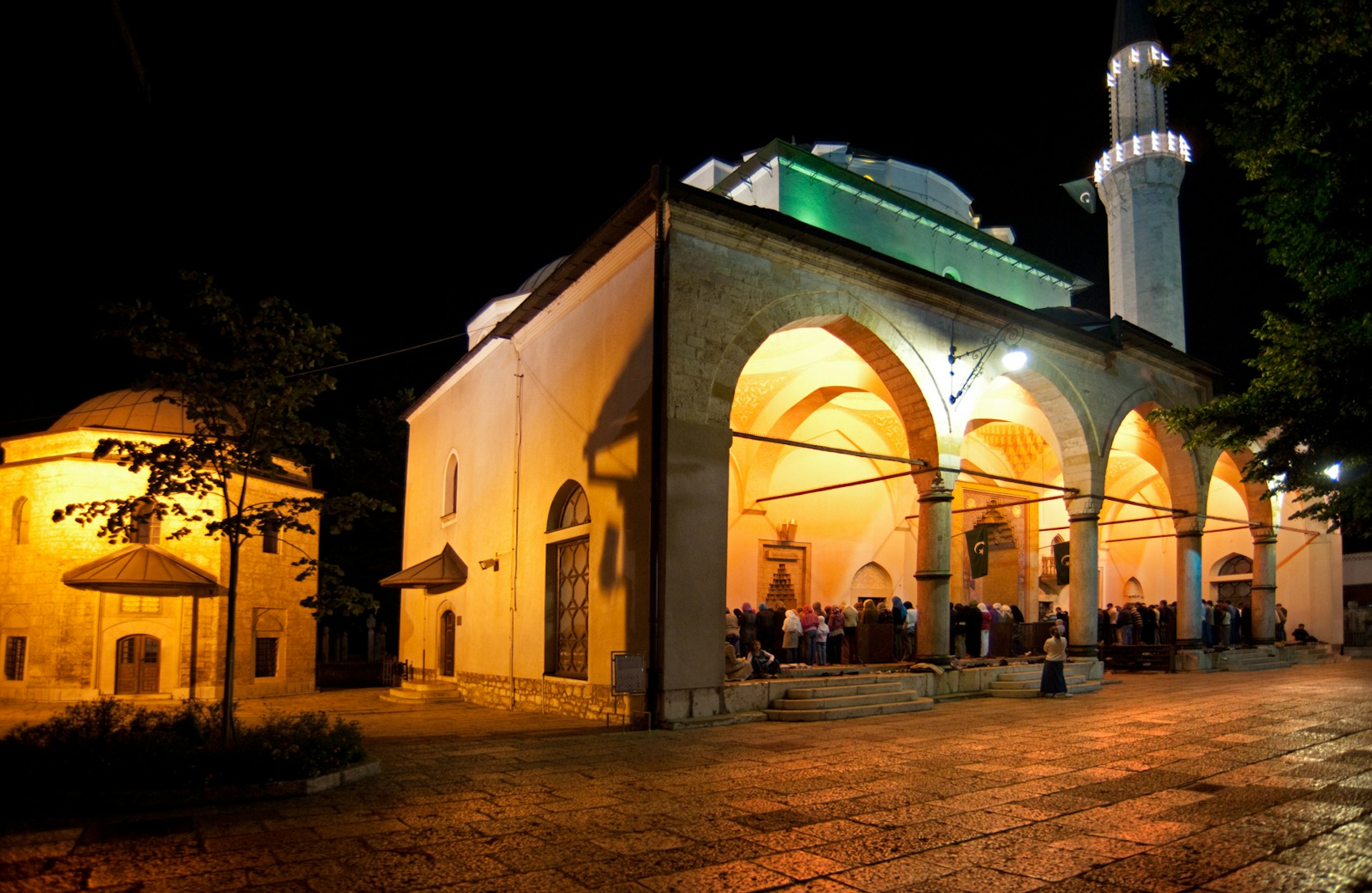
Admire Bosnia’s stunning Ottoman mosques
Despite the efforts of communist rulers and, more recently, Serb and Croat militia to rid BiH of its Muslim monuments, the country remains a land of mosques. BiH is home to some of the finest Ottoman mosques outside of Turkey. Unsurprisingly, the two standout ones are in the capital founded by the Turkish empire. Sarajevo’s ‘oldest’, the 15th century Emperor’s Mosque boasts the largest single sub-dome design in the country. Meanwhile, the city’s most famous and biggest, built a century later is the Gazi-Husrevbey Mosque, which some claim was overseen by architect Sinan. Both display the classical Ottoman architectural features of gravity-defying central domes and elegant pencil-thin minarets, and both are open to tourists. The latter was also at the heart of an impressive medieval social complex that boasted a library, madrasah (school), soup kitchen, and one of the world’s very first public toilets.
Dine on traditional Ottoman fare
It's no coincidence that the Bosnian ‘ćevapi’ sounds like ‘kebab’ – it’s essentially the same word. But unlike the common ‘doner’ – a modern invention – the humble Bosnian ćevapi of freshly baked bread stuffed with pieces of mildly spiced ‘kofte’ and gently fried onion, is probably closer to an authentic Ottoman kebab. Few do it better than Zeljo in Old Sarajevo, whose bustling and overwhelmingly local atmosphere at either branch will reassure any street-food connoisseur. Follow up this commoner's fare with a sweet once reserved for imperial tongues – baklava, flaky puff pastry, drowned in syrup and topped with crumbling pistachio, which began as a royal Ottoman treat but today can be grabbed on almost every street corner in BiH.
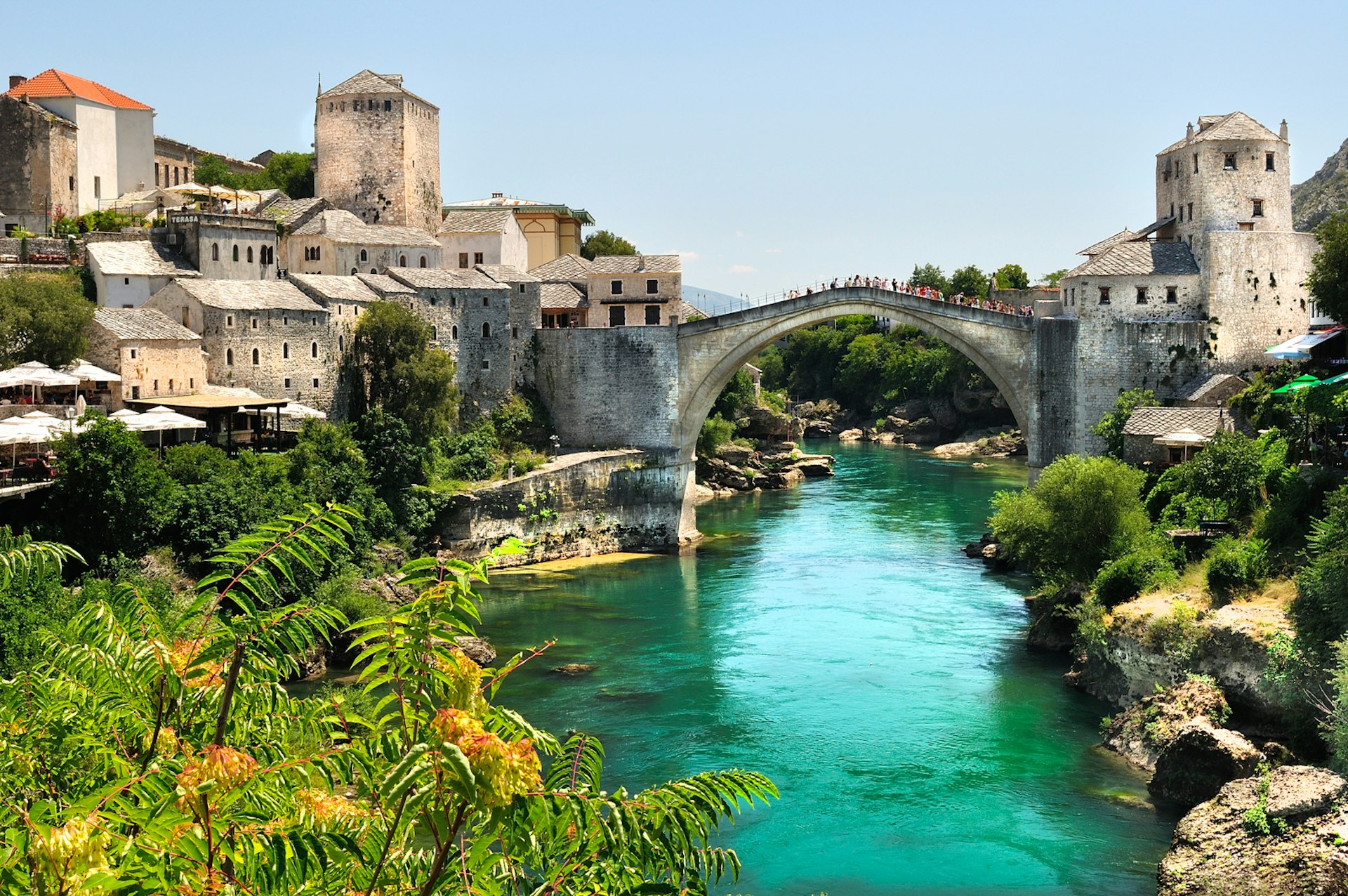
Applaud Bosnian resilience at Stari Most
So often a symbol of BiH, the perfectly arched apex of Stari Most bridge in Mostar has also become a symbol of Bosnian resilience. Originally commissioned by Ottoman Sultan Suleiman the Magnificent, and built by a student of Sinan, Mimar Hayruddin, Stari Most is one of the few constructions able to compete with the great master's own handiwork. Sadly though, after 427 years of wowing the world, the bridge was destroyed on 9 November 1993 by Croat military forces. In 2004, it was resurrected following a masterful reconstruction using the original stonework and building techniques. As a result, the bridge now also represents the resilient, post-war Bosnian spirit, and it is best viewed from atop the medieval Ottoman minaret at nearby Koski Mehmed Pasa Mosque, which can be climbed for a small fee.
Recall Muslim Bosnia’s religious tolerance
One of the oldest Haggadahs in the world, the Sarajevo Haggadah is a beautifully illustrated Jewish manuscript that details the order for the Jewish Passover Seder. It originates from Spain, was brought to Sarajevo by Sephardic Jews and is now kept in Sarajevo's National Museum. Like Sarajevo’s other Jewish heritage sites, such as the old Sephardic synagogue (now the Jewish Museum), it a reminder that Ottoman Sarajevo, known as the ‘Jerusalem of Europe’, welcomed European Jews at a time when other countries were expelling them. In fact, Ottoman Sultan Bayezid II sent his navy out to collect the Jewish refugees from Spain and resettled them across Ottoman lands, where they mostly thrived right up until the early part of the twentieth century.
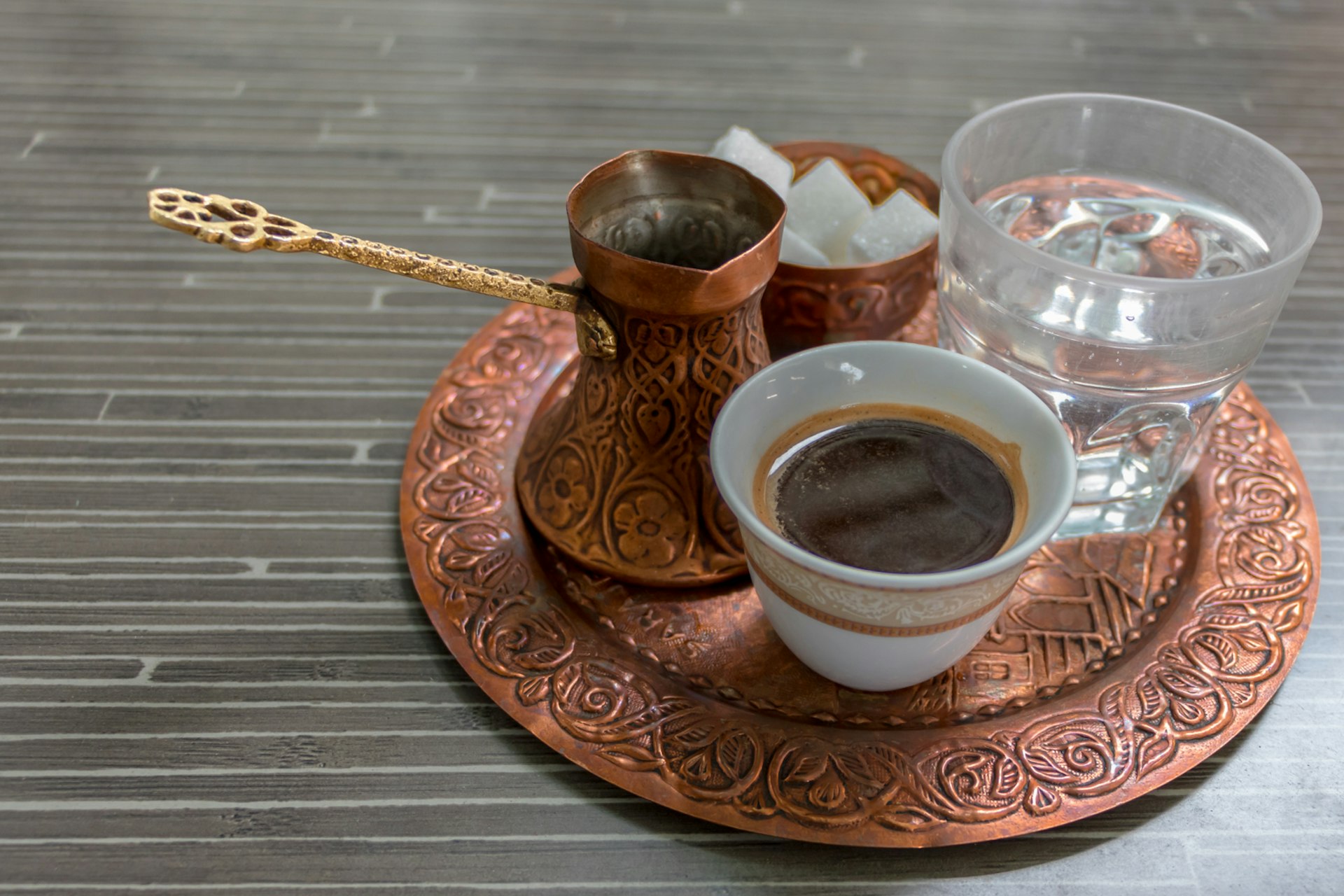
Down a cup of Bosnian coffee
Anywhere else in the world and you'd be calling it Turkish coffee, as that's who brought the popular brown bean to BiH, but nowhere else will you be expected to sip your caffeine hit through a sugar cube. The best place to practice drinking coffee Bosnian-style has to be Rahatlook in central Sarajevo; a delightfully modern cafe with outdoor seating overlooking the old Jewish quarter and enough delicious homemade cakes to while away entire afternoons.
Explore the Bosniak identity
To understand modern BiH, you have to understand what it means to be a ‘Bosniak’ – the term coined to describe the ethnicity of a native of BiH. The original ‘Bosniak’ was Adil Zulfikarpasic, a key figure during the 1990s conflict, and in his Bosniak Institute, housed in Sarajevo’s 16th century hammam (public baths) building, you can truly appreciate why this was so important. Home to a library, archive centre and art gallery, the institute contains Islamic manuscripts dating back to the 14th century, as well as art by some of Bosnia’s most important names. It is also the home of a documentation centre for the Bosnian War.
